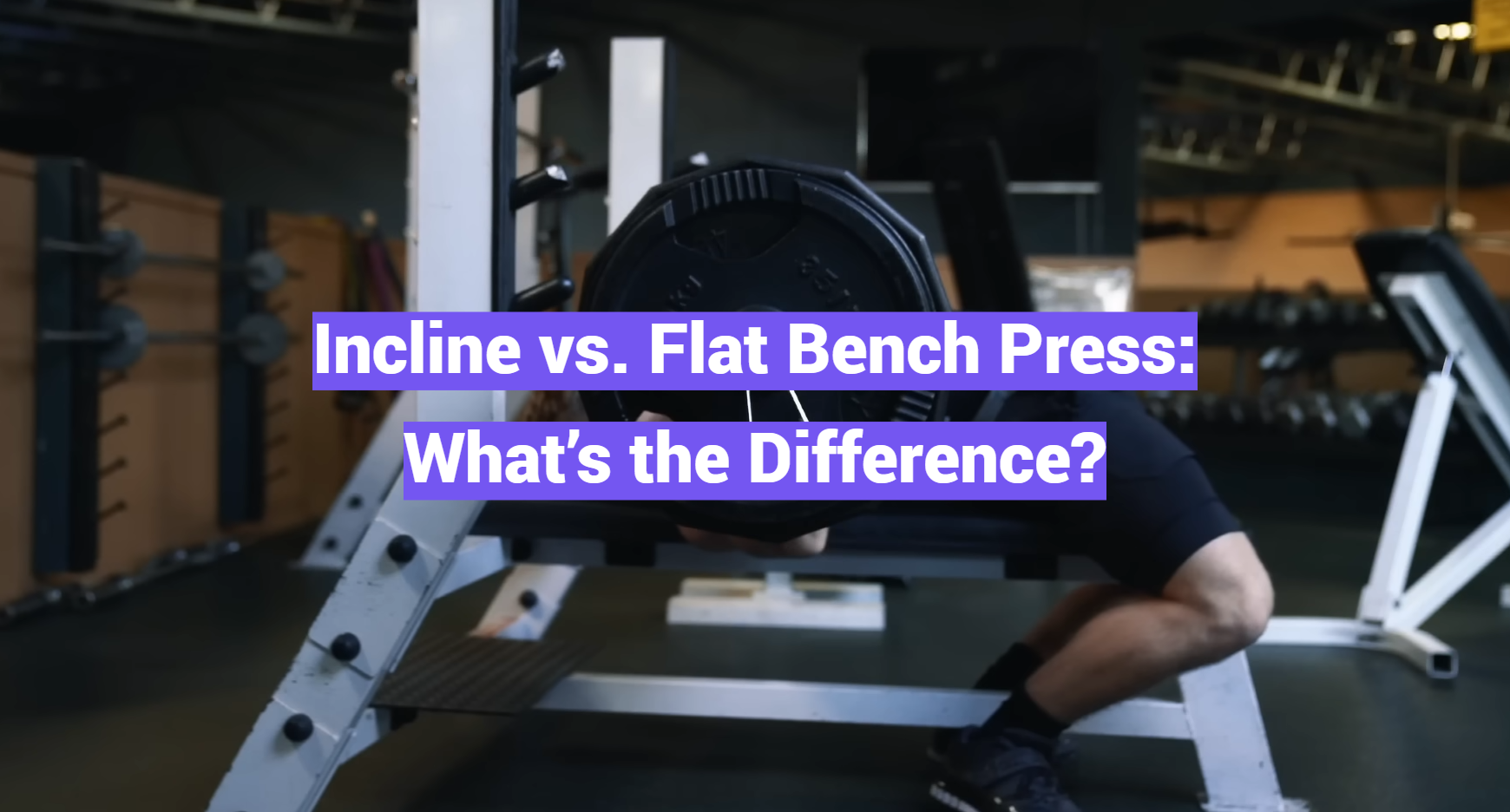When it comes to building chest strength and mass, the bench press is the go-to exercise for many fitness enthusiasts and professional athletes alike. However, not all bench presses are alike. The two most common variations, the incline and flat bench press, target different muscle groups, and understanding the key differences between them can help you make an informed decision about which is most suitable for your fitness goals.
What is the Bench Press?
The bench press is a popular strength training exercise that involves lifting a weight while lying on your back on a bench. It primarily works the muscles in the chest, shoulders, and arms. The barbell bench press is the most common variation where a weighted bar is lifted using both arms at the same time.
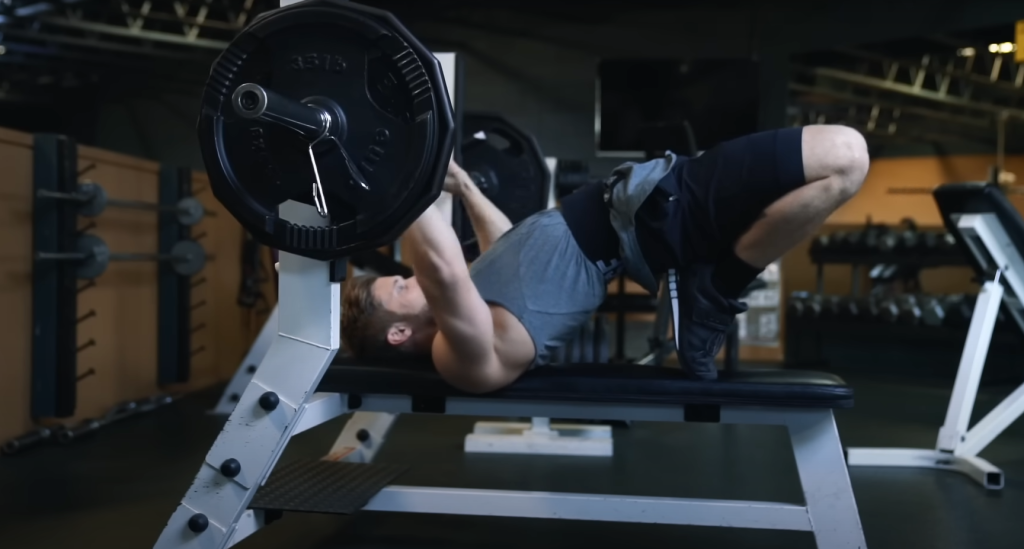
What is an Incline Bench Press?
While flat bench press is a horizontal movement, inclined bench press involves lifting the weight at an angle, usually between 15-45 degrees. This changes the emphasis of the exercise to target more of the upper chest muscles and shoulder muscles.
The Difference Between Incline and Flat Bench Press
The main difference between incline and flat bench press lies in the muscle groups that are targeted. In a flat bench press, the focus is mainly on the middle chest muscles and triceps. In an incline bench press, however, the emphasis is shifted to the upper chest muscles and shoulder muscles. [1]
Benefits of Incline Bench Press
Increased Upper Chest Development:
The incline bench press allows for a greater stretch in the upper chest muscles compared to a flat bench press, leading to increased muscle growth in this area.
Strengthening Shoulder Muscles:
Inclined bench press targets the front deltoids (shoulder muscles) more than flat bench press, helping to improve overall shoulder strength and stability.
Improved Overall Chest Symmetry:
By targeting different areas of the chest, incline bench press can help to develop a more balanced and proportional chest appearance.
Reduced Stress on the Shoulders:
The incline bench press allows for a more natural movement of the shoulder joint, which can reduce the risk of shoulder injuries compared to flat bench press. [2]
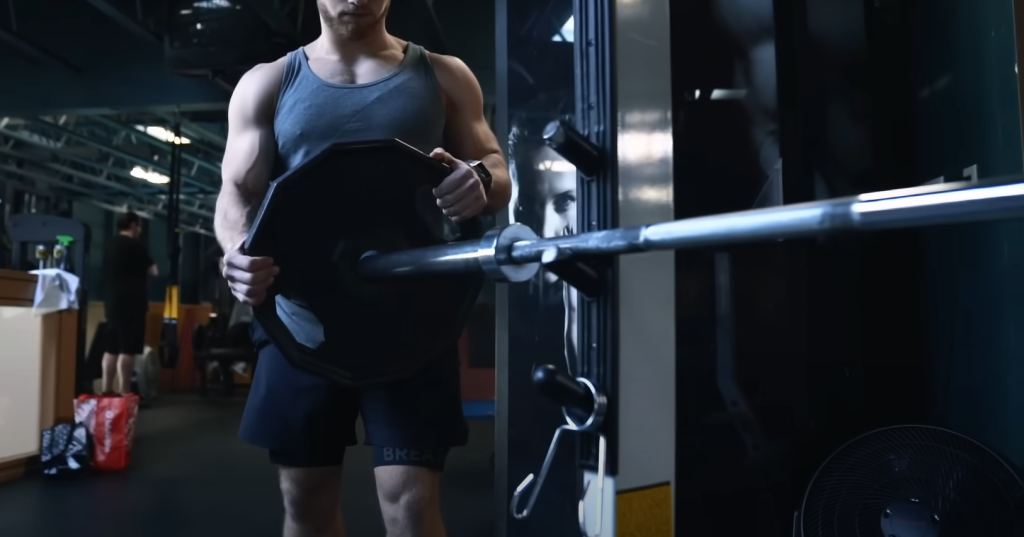
How to Perform an Incline Bench Press
- Set up a bench at a 15-45 degree angle.
- Lie down on the bench with your feet flat on the floor and your back arched slightly.
- Grasp the barbell with an overhand grip, slightly wider than shoulder width apart.
- Lift the bar off the rack and lower it towards your upper chest while keeping your elbows tucked in.
- Push the bar back up to starting position, making sure to exhale during the exertion.
- Repeat for desired number of repetitions.
The History of the Bench Press
The bench press has been a staple exercise in strength training for over a hundred years. It was first popularized by legendary strongman George Hackenschmidt in the early 1900s as part of his “Baltic lifting” routines.
In the 1950s, bodybuilder and powerlifter Paul Anderson became known for his impressive bench press numbers, inspiring many to incorporate the exercise into their training. And in the 1960s, bodybuilder Larry Scott revolutionized the bench press by using an incline bench as part of his chest development routine.
Today, both flat and incline bench press are widely used by athletes, powerlifters, and bodybuilders as a key lift for building upper body strength and muscle mass. So whether you’re a beginner or an experienced lifter, incorporating both variations into your training can help you achieve a well-rounded and balanced physique. So if you’re looking to switch up your chest workouts or target specific muscle groups, give the incline bench press a try and see the difference for yourself!
Benefits of Flat Bench Press
While incline bench press may have its advantages, the flat bench press is still a valuable exercise for building strength and muscle mass. Here are some benefits of incorporating flat bench press into your training routine:
Overall Chest Development:
The flat bench press targets the middle chest muscles (pectoralis major) which are essential for overall chest development.
Tricep Strength:
The triceps are heavily involved in the flat bench press, helping to develop strength and size in this muscle group.
Heavy Lifting Potential:
Due to its stability and support from the bench, the flat bench press allows for heavier weight to be lifted compared to incline bench press.
Variation and Progression:
By changing up grip width, bar path, and using different equipment such as dumbbells or resistance bands, the flat bench press can be modified for continued progression and muscle adaptation. [3]
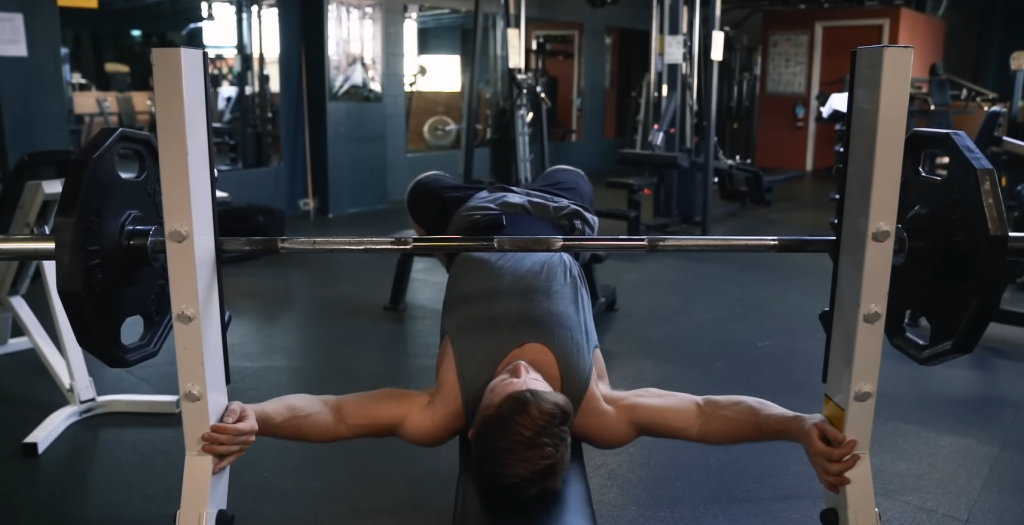
How to Perform Flat Bench Press?
- Lie down on a flat bench with your feet flat on the floor and your back arched slightly.
- Grasp the barbell with an overhand grip, slightly wider than shoulder width apart.
- Lift the bar off the rack and lower it towards your mid-chest while keeping your elbows tucked in.
- Push the bar back up to starting position, making sure to exhale during the exertion.
- Repeat for desired number of repetitions.
Muscles Targeted in Bench Press
- Primary muscles: Pectoralis major (chest), anterior deltoids (shoulders), triceps brachii (arms)
- Secondary muscles: Serratus anterior, coracobrachialis, biceps brachii, latissimus dorsi.
Muscles Targeted in Incline Bench Press
- Primary muscles:Upper pectoralis major (chest), anterior deltoids (shoulders), triceps brachii (arms)
- Secondary muscles:Serratus anterior, coracobrachialis, biceps brachii, latissimus dorsi.
Proper Form and Technique
- Keep your back arched slightly throughout the movement to maintain stability and prevent injury.
- Make sure to grip the barbell firmly with both hands and keep your wrists straight.
- Avoid arching your back excessively or bouncing the weight off your chest, as this can lead to strain or injury. [4]
Safety Tips
- Always use a spotter when performing bench press exercises, especially when using heavy weights or training alone.
- Warm up properly and start with lighter weights before increasing the load to avoid muscle strain or injury.
- If you experience any pain or discomfort during the exercise, stop immediately and consult a doctor if necessary.
Common Mistakes to Avoid
- Flaring out your elbows or bringing them too close to your body can put unnecessary strain on the shoulders and increase the risk of injury.
- Arching your back excessively can also lead to strain, so make sure to maintain a slight arch throughout the movement.
- Bouncing the weight off your chest may give you an initial boost but can cause damage over time, so make sure to lower and lift the weight in a controlled manner.
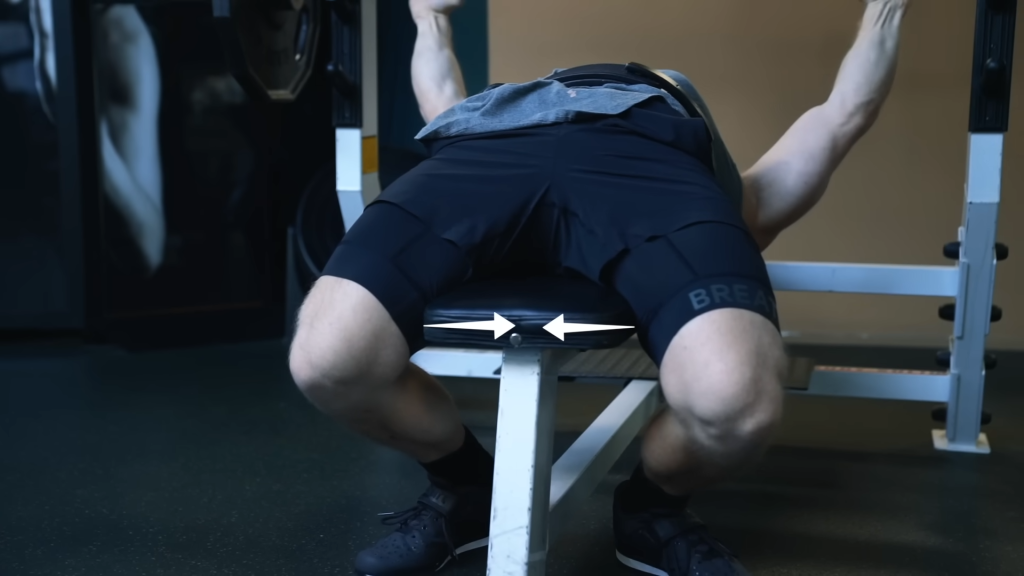
Equipment and Modifications
Dumbbells vs Barbells
Both dumbbells and barbells can be used for bench press exercises, and both have their advantages. Dumbbells allow for a greater range of motion and can help to target individual muscles more effectively, while barbells provide stability and support during heavy lifts.
Resistance Bands
Resistance bands are also a great option for varying the resistance in bench press exercises. By attaching them to the bar or using them in place of weights, you can change the load and intensity of the exercise. This is especially useful for those training at home or without access to a full gym setup.
Bench Angle Adjustments
Adjusting the angle of the bench can also change the focus and intensity of the exercise. A flat bench targets overall chest development, while an incline bench targets the upper chest muscles. Experiment with different angles to find what works best for your goals and body.
Top 17 Incline Bench Press Exercises and How to Perform Them
- Incline Barbell Bench Press: Follow the same steps as for flat bench press, but use an incline bench instead.
- Incline Dumbbell Bench Press:Lie back on an incline bench and hold a dumbbell in each hand at shoulder level. Push the weights up above your chest, squeezing your pecs at the top of the movement.
- Incline Smith Machine Bench Press:Similar to incline barbell bench press, but using a smith machine for added stability and control of the weight.
- Isometric Incline Barbell Press:Hold the bar at arm’s length above your chest and hold for 5-10 seconds before lowering it back down.
- Incline Reverse-Grip Barbell Bench Press:Use an underhand grip on the bar and bring it down towards your lower chest, targeting the upper pecs and inner chest muscles.
- Incline Push-Ups:Place your feet on a bench or elevated surface and perform push-ups at an incline.
- Suspension Incline Rows:Using suspension straps, perform rows with your feet elevated on a bench for an added challenge.
- Incline Dumbbell Flyes:Lie back on an incline bench and hold a dumbbell in each hand at arm’s length above your chest. Lower the weights out to the sides, feeling a stretch in your chest muscles before bringing them back up to starting position.
- Incline Dumbbell Pullovers:Lie back on an incline bench and hold a dumbbell with both hands above your chest. Lower the weight behind your head, keeping your arms straight, before bringing it back up to starting position.
- Incline Cable Flyes:Using a cable machine and an incline bench, perform flyes by bringing the cables together in front of your chest.
- Incline Cable Crossover:Similar to incline cable flyes, but bring the cables down and together below your chest to target the lower pec muscles.
- Incline Front Delt Raise:Using a light dumbbell or resistance band, perform front raises while lying on an incline bench to target the front deltoid muscles.
- Incline Bicep Curls:Sit backwards on an incline bench and perform bicep curls with dumbbells or a barbell, targeting both the biceps and upper chest muscles.
- Incline Tricep Extensions:Lie back on an incline bench and hold a dumbbell or cable in each hand above your head. Lower the weight behind your head, keeping your arms close to your temples, before extending them back up.
- Incline Shoulder Press:Sit backwards on an incline bench and perform shoulder presses with dumbbells or a barbell, targeting both the shoulders and upper chest muscles.
- Incline Plank:Place your feet on an elevated surface and hold a plank position for added core and upper body stability work.
- Incline Medicine Ball Push-Ups:Place one or both hands on a medicine ball while performing incline push-ups for added instability and muscle recruitment. [5]

Top 17 Flat Bench Press Exercises and How to Perform Them
- Flat Barbell Bench Press: Lie back on a flat bench and grip the bar with hands slightly wider than shoulder width. Lower the bar down to your chest, keeping your elbows tucked in, then press it back up.
- Flat Dumbbell Bench Press:Similar to flat barbell bench press, but using dumbbells instead for a greater range of motion.
- Flat Smith Machine Bench Press:Similar to flat barbell bench press, but using a smith machine for added stability and control of the weight.
- Close-Grip Barbell Bench Press:Keep your hands closer together on the bar and bring it down towards your lower chest, targeting the triceps muscles more than a traditional bench press.
- Wide-Grip Barbell Bench Press:Place your hands wider apart on the bar and bring it down towards your upper chest, targeting the outer chest muscles more than a traditional bench press.
- Flat Push-Ups:Perform push-ups on a flat surface, keeping your body straight and core engaged.
- Suspension Flat Rows:Using suspension straps, perform rows with your feet planted on the ground for added stability.
- Flat Dumbbell Flyes:Lie back on a flat bench and hold a dumbbell in each hand at arm’s length above your chest. Lower the weights out to the sides, feeling a stretch in your chest muscles before bringing them back up to starting position.
- Flat Dumbbell Pullovers:Lie back on a flat bench and hold a dumbbell with both hands above your chest. Lower the weight behind your head, keeping your arms straight, before bringing it back up to starting position.
- Flat Cable Flyes:Using a cable machine and a flat bench, perform flyes by bringing the cables together in front of your chest.
- Flat Cable Crossover:Similar to flat cable flyes, but bring the cables down and together below your chest to target the lower pec muscles.
- Front Delt Raise:Using a light dumbbell or resistance band, perform front raises while sitting on a flat bench to target the front deltoid muscles.
- Bicep Curls:Sit on a flat bench and perform bicep curls with dumbbells or a barbell, targeting the biceps muscles.
- Tricep Extensions:Lie back on a flat bench and hold a dumbbell or cable in each hand above your head. Lower the weight behind your head, keeping your arms close to your temples, before extending them back up.
- Shoulder Press:Sit on a flat bench and perform shoulder presses with dumbbells or a barbell, targeting the shoulders muscles.
- Plyometric Push-Ups:Perform explosive push-ups on a flat surface, pushing yourself off the ground with enough force to allow your hands to leave the ground.
- Incline/Decline Push-Ups: Place your feet on an elevated or declined surface and perform push-ups to target different areas of the chest muscles. [6]
As you can see, there are many variations of both incline and flat bench press exercises that target different muscle groups in the chest, arms, and shoulders. Incorporating a variety of these exercises into your workout routine can help you develop a well-rounded and strong upper body. Remember to always use proper form and consult a professional trainer if needed to avoid injury.
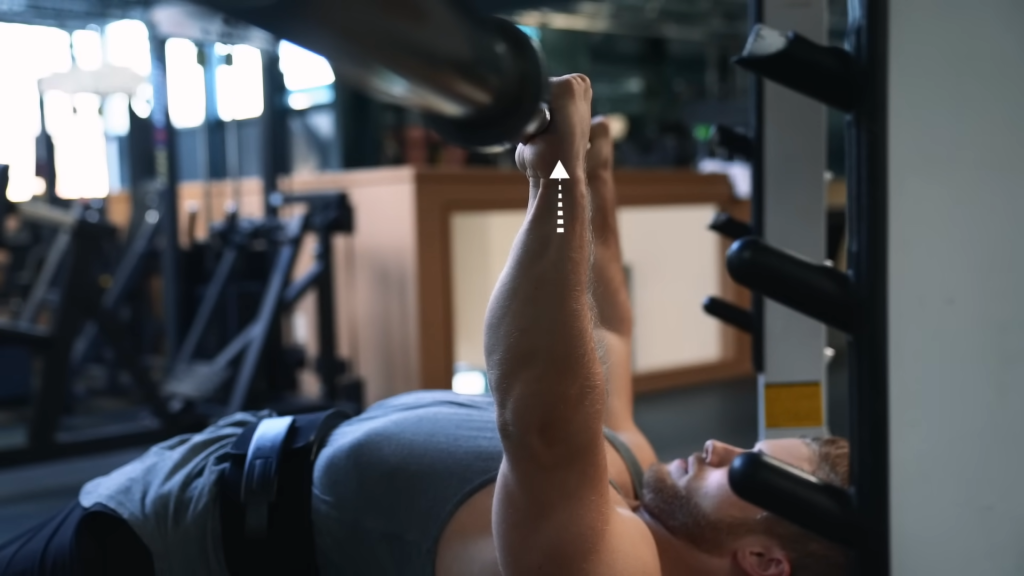
FAQs
What is the primary difference between an incline and a flat bench press?
The primary difference is the angle of the bench. Incline bench press targets the upper chest muscles, while flat bench press targets the middle chest muscles.
Can incline and flat bench press be incorporated into the same workout routine?
Absolutely! In fact, incorporating both variations can help to achieve a well-rounded and balanced physique by targeting different muscle groups and providing variation in training.
How many sets and repetitions should I do for flat bench press?
The number of sets and repetitions can vary depending on your goals, experience level, and training routine. However, a general guideline is to start with 3-4 sets of 8-12 repetitions for muscle mass and strength development.
Which muscles are targeted more in the incline bench press as opposed to the flat bench press?
The incline bench press primarily targets the upper chest muscles, anterior deltoids, and triceps. However, both variations involve the same secondary muscles.
Is one form of bench press better than the other for building overall strength?
Both flat and incline bench press can be effective in building overall strength, but it ultimately depends on the individual’s goals and preferences. As mentioned, incorporating both variations can provide a well-rounded training routine.
How does the angle of incline affect the effectiveness of the bench press?
The angle of incline can change the emphasis of the exercise, targeting different muscle groups and providing variation in training. A steeper incline may target the shoulders more, while a slight incline can still primarily target the chest. It is important to choose an angle that is comfortable and suitable for your goals and abilities.
Should I incorporate both incline and flat bench presses into my workout routine?
Incorporating both variations can provide a well-rounded training routine and target different muscle groups. However, it is important to listen to your body and not overtrain or strain yourself. Make sure to warm up properly and consult with a trainer if necessary.
What are the common mistakes to avoid while performing incline and flat bench presses?
Some common mistakes include flaring out the elbows, excessive arching of the back, and bouncing the weight off the chest. It is important to maintain proper form and not use momentum to lift the weight. Start with lighter weights and focus on controlled movements for optimal results.
Can beginners start with an incline bench press or should they master the flat bench press first?
It is recommended for beginners to start with the flat bench press and master proper form and technique before moving on to an incline bench press. However, it is ultimately up to the individual’s comfort level and abilities. If unsure, consult with a trainer for guidance.
Conclusion
In conclusion, both incline and flat bench press are great exercises for building upper body strength and muscle mass. They target different areas of the chest and shoulders, but both movements have their own benefits.
The incline bench press allows for a greater range of motion in the shoulder joint, placing more emphasis on the front deltoids. This can be beneficial for individuals looking to increase their shoulder size and strength. Additionally, the incline bench press also activates the upper chest muscles more than the flat bench press.
On the other hand, the flat bench press is a compound movement that targets multiple muscle groups including the chest, shoulders, and triceps. It allows for heavier weight to be lifted due to a stronger base of support and can help with overall strength and power.
It is important to note that both exercises have their place in a well-rounded training program. It is recommended to include both incline and flat bench press in your workout routine, but the ratio may vary depending on individual goals and preferences.
Remember to always use proper form and listen to your body when performing these exercises. With consistency, proper nutrition, and adequate rest, you can achieve your desired upper body strength and physique. Keep pushing yourself and challenging your muscles to continue seeing progress in your training. So whether you prefer the incline or flat bench press, incorporate both variations into your workouts for a well-rounded and balanced upper body. Happy lifting!
Useful Video: Flat vs Incline vs Decline Bench Press: Choosing for Your Goals
References:
- https://www.healthline.com/health/fitness-exercise/incline-vs-flat-bench
- https://www.strengthlog.com/incline-bench-press-vs-flat-bench-press/
- https://marathonhandbook.com/flat-vs-incline-bench-press/
- https://breakingmuscle.com/incline-bench-press-vs-flat-bench-press/
- https://www.si.com/showcase/fitness/incline-vs-flat-bench
- https://barbend.com/incline-bench-press-vs-flat-bench-press/

